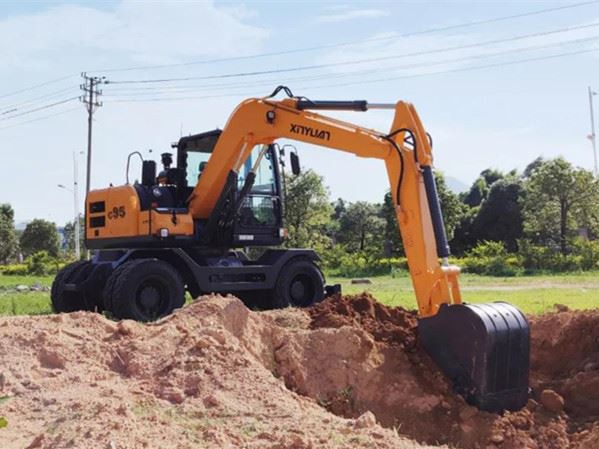Engine plays an important role in construction machinery. Therefore, learning to understand the parameters of the engine is a necessary skill. When comparing models, many people may only know to compare with models of the same level, but do not understand the meaning of various parameter values. This article will explain the meaning of some common engine parameters and their relationship.
1. Maximum power, rated power, net power
Power refers to the amount of work done by an object in unit time. The engine power is directly proportional to the speed. Generally, the greater the power, the higher the engine speed, and the higher the working efficiency and speed of the equipment. Therefore, the maximum power is often used to describe the power performance of the equipment.
Rated power refers to the maximum output power of the engine under normal operation without any accessories.
The maximum engine power is one of the key parameters for construction machinery users when purchasing machines.
The maximum output power is the ability of the engine to run at an instant overload. Without considering the damage, it reaches the peak value in a short time. Generally, the test does not include accessories such as transmission device, air filter and cooling fan.
Net power refers to the maximum effective power output by the engine power take-off shaft under normal operation when the engine is equipped with all accessories under actual working conditions.
Therefore, maximum power > rated power > net power. Generally speaking, the smaller the difference between rated power and net power, the more reasonable the power structure design of this equipment.
2. Maximum torque
Torque reflects the load capacity of the engine, including digging force, climbing ability, etc. Under the same power, the faster the engine speed is, the smaller the torque is; On the contrary, the larger. Under the same displacement, the greater the engine torque, the better the engine performance.
The greater the torque of the excavator engine, the greater the digging force; The greater the torque of the loader's engine, the greater the lifting force; For bulldozers, the greater the torque, the stronger the thrust.
3. Number of cylinders, bore and stroke
The number, diameter and stroke of engine cylinders determine the displacement, torque and power of the engine.
The number of cylinders is the number of cylinders. The cylinder bore is the diameter of the cylinder. Stroke (stroke) is the distance between top dead center and bottom dead center of piston motion stroke.
When the number of cylinders is the same, each cylinder can be designed as "large bore" with “Short stroke”can also be designed as "small bore" with “Long stroke", different designs will directly make the engine output performance different.
"Small bore" × For "long stroke" engines, because the piston has a long stroke in the engine cylinder, the greater the power it generates, the greater the torque and the lower the relative speed.
The function of the number of cylinders is that when the cylinder diameter and stroke are the same, the more the number of cylinders, the greater the engine displacement and the higher the power. However, the engine with a large number of cylinders occupies a large space, so it is not suitable for small construction machinery and equipment.
Engine parameter performance has a great impact on the use of construction machinery and equipment. Therefore, when selecting equipment, the parameter performance of engine can not be ignored. Only by comprehensively considering various performance can we buy equipment that meets our own needs.

